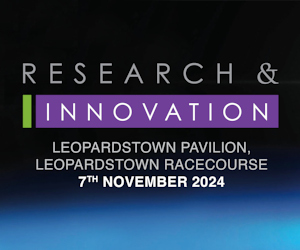DO ANIMALS WITH GERM PLASM EVOLVE FASTER?

New research suggests that genes evolve more rapidly in vertebrate species that have germ plasm as a part of their reproductive process.
The study, published in Science, tests a novel theory that early developmental events dramatically alter the vertebrate body plan and the way evolution proceeds.
Early in animal development a subset of cells in an embryo becomes committed to produce Primordial Germ Cells (PGCs). PGCs develop into sperm or eggs. The remaining cells develop as the soma, a term that describes all of the tissues that make up an individual’s body.
The germ line is an immortal cell lineage, passed on from generation to generation, and charged solely with producing a new embryo at fertilization.
The soma, on the other hand, dies off in every generation. In the most classic biological sense its job is to interpret the effects of natural selection in order to determine genetic fitness, leading to so called “survival of the fittest.”
There are two known ways to make a PGC. There is preformation—material in the egg called germ plasm is inherited directly by a few cells in the embryo, and germ plasm instructs these cells to become PGCs.
Alternatively, PGCs can develop without germ plasm. In this case PGCs can be induced to form by signals secreted from other cells, which are part of the soma. This is called epigenesis.
“Biologists are accustomed to thinking about how adult somatic traits impact natural selection and the evolution of new species. What is much less clear is the role of embryological mechanisms in evolution, and how they might contribute to species diversity,” says Andrew Johnson of the University of Nottingham.
He is of the view that the relationship between the germ line (hereditary germ cells that create sperm and eggs) and the soma (cells which form the body of an organism) also impacts on species diversity.
He argues that once a species evolves a substance called germ plasm, germ cells are independent of other cells, so constraints on somatic development are liberated and this enhances a species’ ability to evolve.
As a result, he says, vertebrates such as frogs, fruit flies, and birds, which look unlike their ancestors, came about, and remarkably they evolved much faster than their ancestors did.
“To investigate the effect germ plasm has on sequence changes we had to look at as many sequences as possible—nearly 12 million sequences were analyzed and processed from 165 different species including mammals, reptiles, amphibians, and fish,” says study coauthor Matt Loose.
With graduate student Teri Evans, Loose wrote computer programs to process these sequences and test the hypothesis. They compared DNA sequences from species that contain germ plasm with related species that use epigenesis instead.
So, for example, they compared DNA from salamanders (epigenesis) with frogs (germ plasm), both of which are amphibians. Unexpectedly, they found that species with germ plasm have a faster rate of sequence change than those without. Thus, frogs evolve faster than salamanders.
Similar comparisons with fish and reptile species identify the same pattern, suggesting it is a generalized feature of animal evolution. These results support the theory that germ plasm provides a selective advantage because it enables more rapid evolution. In addition, they support the view that the relationship between development of the germ line and soma shapes species diversity in the animal kingdom.
“What Matt and I have been working on would not normally have been predicted,” says Johnson. “This paper shows that animals can evolve more rapidly with germ plasm. Typically evolution is thought to be a gradual process, but this work suggests that the evolution of germ plasm can lead to explosive radiations of species.
“Importantly, because of the accelerated rate of evolution, genetic similarities between species can differ from that expected from their phylogenetic relationships. This has broad implications across biological disciplines.”
Johnson adds, “One of the things that was initially intriguing was that early on we realized that embryos from animals with germ plasm were different than embryos that use epigenesis. In fact, the adult body forms of these animals were not like those of ‘typical vertebrates.’
“This is why we developed the axolotl as an experimental model. Axolotls are ‘typical vertebrates,’ and they don’t contain germ plasm. We found that the mechanisms that control axolotl development are conserved in mammalian embryos. However, they are not found in ‘conventional’ models for vertebrate development, all of which have germ plasm.
“So when germ plasm evolves it leads to evolutionary dead ends. In other words, whereas salamander-like amphibians evolved into reptiles, then mammals, frogs could only evolve into other frogs. A lot of different frogs, but still just frogs.
“For this reason we think axolotl embryos have a very promising future as a model for human development.”
Source: University of Nottingham








There are no comments at the moment, do you want to add one?
Write a comment